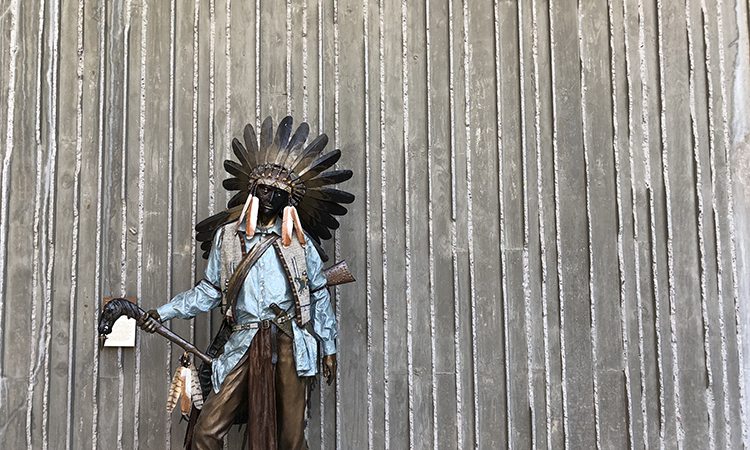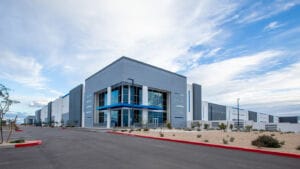Scottsdale’s Museum of the West and local architecture firm, Studio Ma, collaborated to create a sustainable, environmentally friendly and nature inspired museum. One that is both unique and special to the museums visitors and citizens of Scottsdale.
When designing the museum, Studio Ma drew inspiration from parts of the old west incorporating ceilings to resemble woven baskets and walls to resemble the spine of a saguaro cactus. The museum was also designed with the idea of wide open spaces, like the old west, with views of Camelback Mountain that go on for miles.
“It is more than just a place of exhibition, it is really a reflection of the commitment to nature, and the American West. In all the ways Christiana and her design team have incorporated these different elements, it really does reflect our vision of showing respect for the history of the West and looking forward.” said Museum Director Mike Fox.
Aside from being respectful to the story of the old west incorporated with the new west, the building has many green features that make it a sustainable building and a LEED Gold-certified building. In order for a building to have this LEED Gold-certification, it must satisfy various requirements, which are geared towards different green building practices.
Christiana Moss, Studio Ma managing principal, shared several examples of how the museum implemented green building practices to receive this certification.

One of the ways the museum reduces its energy use is by a process called self-shading. When a building implements this process of self-shading it is designed so the facades of the building branch out farther in certain areas to provide shade which helps reduce energy costs.
The way Studio Ma incorporated self-shading in the building was by drawing inspiration from a saguaro cactus with rugged walls that resemble the spine of the cactus. Aside from being an interesting looking feature, the ruggedness of the wall is what provides that self-shading feature.
“Our self-shading walls emulate the ribs of a saguaro cactus, the way that when a cactus is nice and full of water it fills up and shades itself less, but when the cactus is really in need of water it shades itself much more because it becomes shrunken in and the folds of the cactus actually end up shading itself more.”
Because of this self-shading feature, the Scottsdale Museum of the West uses about 38 percent less energy than a typical museum would.
The museum also has implemented green building by celebrating rain water collection. They have created many bioswales around the landscape of the property.
“So, all of the water from the roof that is captured is drained into the bioswales and a series of runnels that takes water from the mechanical systems waste and also from the roof and diverts it into the landscape areas,” explained Moss.
In the courtyard, one of the museum’s distinguishing features is the ‘Weeping Wall’. This beautiful, patinaed wall is eye-catching to visitors and serves as a sustainable purpose. The ‘Weeping Wall’ is where the condensate from the mechanical systems literally runs down the face of the wall.
“The “Weeping Wall” tells the story about water and how precious it is and how important it is in the southwest,” said Fox.
“Not only are these green features important in terms of reducing our carbon footprint but they are also extremely practical in terms of operations,” added Fox.
Arizona State University Professor and sustainability expert Harvey Bryan confirmed that these green features can be extremely beneficial when it comes to operational costs.
He noted that how conserving energy, like this museum does, will ultimately have significant energy saving costs and reduced water costs through the reclamation of rooftop water.
“In addition, studies have documented a correlation between improved indoor environmental quality and reduced employee absenteeism and higher productive in sustainable buildings,” added Bryan.




